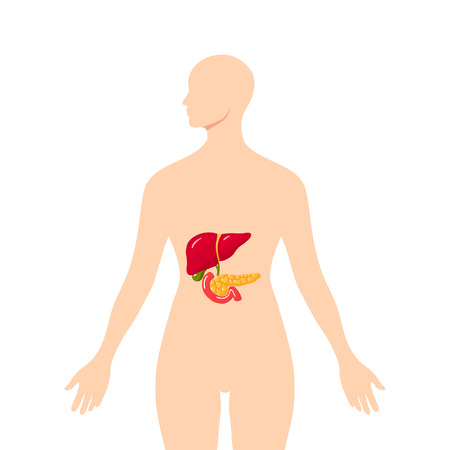Overview of Pediatric Orthopedic Rehabilitation in the US
Pediatric orthopedic rehabilitation in the United States is a specialized field focused on helping children recover and thrive after injuries, surgeries, or conditions affecting their bones, joints, and muscles. This approach is designed to meet the unique needs of growing children and their families, using evidence-based practices that fit American cultural values and healthcare standards.
Key Concepts in Pediatric Orthopedic Rehabilitation
Pediatric orthopedic rehab isn’t just about fixing broken bones. It’s a comprehensive process that looks at the whole child: their physical abilities, emotional well-being, social needs, and family support. Here are some important concepts:
- Family-Centered Care: Involving parents and caregivers in every step to make therapy comfortable and effective for the child.
- Developmental Focus: Therapy plans are customized based on each child’s age, stage of development, and activity level.
- Interdisciplinary Teamwork: Therapists, doctors, nurses, social workers, and teachers often work together to create the best outcomes.
- Inclusive Participation: Encouraging kids to return to school, sports, and daily activities as soon as safely possible.
Prevalence of Pediatric Orthopedic Conditions in the US
Many children in the US experience orthopedic issues at some point. These can range from common injuries like fractures to more complex conditions such as cerebral palsy or scoliosis. The table below highlights some typical pediatric orthopedic concerns seen across America:
| Condition | Common Examples | Who is Affected? |
|---|---|---|
| Injuries | Fractures, sprains, dislocations | Youth athletes, playground accidents |
| Congenital Disorders | Clubfoot, hip dysplasia | Newborns and infants |
| Neuromuscular Conditions | Cerebral palsy, muscular dystrophy | Children with developmental diagnoses |
| Spinal Issues | Scoliosis | Tweens and teens (ages 10-16) |
| Post-Surgical Rehab | Knee/hip surgery recovery | Youth recovering from procedures |
Main Goals of Pediatric Orthopedic Rehabilitation for American Families
The primary aim of pediatric orthopedic rehabilitation is to help kids get back to doing what they love—whether it’s running around at recess, playing sports with friends, or simply moving without pain. For families in the US, these goals include:
- Pain Management: Using safe techniques to reduce discomfort during recovery.
- Restoring Mobility: Helping children regain strength, balance, and flexibility.
- Encouraging Independence: Teaching kids skills so they can participate fully at home and school.
- Promoting Confidence: Supporting emotional wellness by building self-esteem through achievement and progress.
- Cultural Sensitivity: Respecting diverse family backgrounds while providing care that fits American lifestyles.
2. Multidisciplinary Team and Family-Centered Care
In the United States, pediatric orthopedic rehabilitation is most successful when it involves a team of professionals working together, along with the active participation of the child’s family. This collaborative model ensures that every aspect of a child’s care is addressed, from medical needs to emotional well-being and daily living challenges.
The Multidisciplinary Team Approach
Pediatric patients often require expertise from several different healthcare providers. In the US, a typical multidisciplinary rehabilitation team includes:
| Role | Main Responsibilities |
|---|---|
| Pediatric Orthopedic Physician | Diagnoses conditions, oversees treatment plans, and performs surgical or non-surgical interventions |
| Physical Therapist (PT) | Focuses on mobility, strength, and coordination through individualized exercise programs |
| Occupational Therapist (OT) | Helps children develop skills for everyday activities like dressing, eating, and writing |
| Social Worker | Provides emotional support, connects families with community resources, and assists with navigating insurance and school needs |
| Nurse Case Manager | Coordinates communication between team members and monitors overall care progress |
| Speech-Language Pathologist (if needed) | Addresses communication or feeding difficulties related to orthopedic issues or overall development |
The Importance of Family Engagement
Family-centered care is a cornerstone of pediatric rehabilitation in the US. Families are not just visitors—they are valued partners in decision-making and daily care. Providers encourage parents or caregivers to:
- Participate in therapy sessions whenever possible
- Communicate their child’s unique needs and preferences
- Ask questions about goals, progress, and at-home activities
- Collaborate with school staff to support educational needs
- Utilize support networks for emotional and practical help
Cultural Sensitivity and Communication
The US healthcare system recognizes the diversity of families. Team members strive to respect cultural backgrounds, preferred languages, and family traditions. Open communication is encouraged to build trust and ensure that care plans align with each family’s values.
Benefits of This Collaborative Approach
- Holistic care that addresses all aspects of the child’s life
- Smoother transitions between hospital, home, and school environments
- Better long-term outcomes due to early intervention and consistent follow-up
- A supportive environment where families feel empowered rather than overwhelmed

3. Evidence-Based Assessment and Goal Setting
Understanding the Importance of Assessment in Pediatric Orthopedic Rehab
In the United States, pediatric orthopedic rehabilitation starts with a thorough, evidence-based assessment. Clinicians use standardized tools to evaluate a childs physical abilities, limitations, and needs. The assessment phase is essential because it guides the entire rehab process and ensures each child receives personalized care.
Common Assessment Tools Used in the US
Healthcare professionals rely on several validated assessment tools to get a clear picture of a child’s functional status. These tools help identify areas that need attention and track progress over time. Below is a table summarizing some widely used tools:
| Assessment Tool | Pediatric Use | Main Focus |
|---|---|---|
| Pediatric Outcomes Data Collection Instrument (PODCI) | Yes | Measures function and quality of life in children with musculoskeletal disorders |
| Gross Motor Function Measure (GMFM) | Yes | Assesses changes in gross motor function, especially for children with cerebral palsy |
| Pediatric Evaluation of Disability Inventory (PEDI) | Yes | Evaluates self-care, mobility, and social function skills |
| Pain Scales (e.g., Wong-Baker FACES) | Yes | Assesses pain intensity in children of different ages |
Outcome Measures: Tracking Progress Effectively
Outcome measures are key for monitoring improvements and guiding any necessary changes to the rehab plan. In American clinical settings, therapists regularly document progress using both standardized tests and parent/child feedback. This approach ensures that treatment is effective and responsive to each childs changing needs.
Why Outcome Measures Matter:
- Objective Tracking: Quantifies improvement or identifies when adjustments are needed.
- Insurance Purposes: Documentation supports continued therapy coverage.
- Motivation: Kids and families see real progress, which boosts engagement.
Personalized Goal Setting: Collaborating with Families
A key aspect of pediatric orthopedic rehab in the US is setting individualized goals with the child and their family. Therapists follow best practices by making sure goals are SMART (Specific, Measurable, Achievable, Relevant, Timely). This collaborative process empowers families and keeps everyone focused on what matters most to the child’s daily life.
Example of SMART Goals in Pediatric Ortho Rehab:
| Goal Component | Sample Goal Statement |
|---|---|
| Specific | The child will walk independently from the living room to the kitchen. |
| Measurable | The child will complete this task within one month. |
| Achievable | The child has already mastered walking with minimal support over short distances. |
| Relevant | This goal increases independence at home. |
| Timely | The goal will be reviewed after four weeks for progress. |
The Role of Family Engagement
In American practice, families are seen as active team members. Therapists regularly communicate with parents or caregivers to set realistic expectations, celebrate achievements, and adjust goals as needed. This partnership enhances outcomes and makes rehab more meaningful for kids.
Pediatric orthopedic rehabilitation in the US relies on a structured yet flexible approach to assessment and goal setting—always focusing on what helps each child thrive in their everyday environment.
4. Innovative Therapies and Technology Integration
Overview of Advanced Rehabilitation Techniques
In the United States, pediatric orthopedic rehabilitation programs are constantly evolving to provide the best care for children with musculoskeletal conditions. American rehab centers use a variety of advanced techniques designed to support children’s growth, mobility, and independence. These therapies focus on making rehab engaging, effective, and tailored to each child’s needs.
Popular Advanced Techniques in Pediatric Orthopedic Rehab
| Technique | Description | Common Uses |
|---|---|---|
| Constraint-Induced Movement Therapy (CIMT) | Encourages use of a weaker limb by restricting the stronger one | Cerebral palsy, post-stroke recovery |
| Functional Electrical Stimulation (FES) | Uses electrical impulses to stimulate muscle contractions | Muscle weakness, nerve injuries |
| Aquatic Therapy | Therapeutic exercises performed in water to reduce joint stress | Post-surgery rehab, arthritis, developmental delays |
| Robot-Assisted Therapy | Robotic devices help guide movement and improve motor skills | Spinal cord injuries, severe muscle weakness |
| Play-Based Therapy | Integrates games and play to motivate participation in exercises | All pediatric cases; improves engagement and outcomes |
Adaptive Equipment in Daily Rehab Practice
American pediatric rehab centers make extensive use of adaptive equipment to help kids achieve their goals at home and school. These tools are specially designed to address challenges children may face with mobility or self-care.
Examples of Adaptive Equipment Used in the US:
- Pediatric Walkers and Gait Trainers: Support safe walking and promote independence.
- Orthotic Braces (AFOs, KAFOs): Provide stability for ankles, knees, or entire legs.
- Sensory Integration Tools: Weighted blankets, therapy balls, or textured mats for sensory processing challenges.
- Bikes with Adaptive Pedals: Allow children with limited strength or coordination to enjoy cycling.
- Custom Wheelchairs: Personalized seating systems that enhance comfort and function.
The Role of Telehealth in Pediatric Orthopedic Rehab
The adoption of telehealth has significantly expanded access to expert pediatric rehabilitation services across the US. Through secure video calls and remote monitoring platforms, therapists can connect with families in rural areas or those unable to travel. Telehealth is especially useful for follow-ups, home exercise program supervision, caregiver training, and multidisciplinary team meetings.
Main Benefits of Telehealth for Pediatric Patients:
- Convenience: Families can attend sessions from home without long commutes.
- Continuity of Care: Reduces gaps between appointments and supports ongoing progress tracking.
- Cultural Sensitivity: Therapists can observe a child’s environment for more personalized recommendations.
- Crisis Adaptability: Maintains care during events like pandemics or natural disasters.
The Impact of New Technologies on Pediatric Rehab Outcomes
Pediatric rehab programs in the US are quick to adopt innovative technologies that make therapy more interactive and data-driven. Wearable sensors track movement and progress; virtual reality games motivate kids during challenging exercises; mobile apps keep families engaged with daily routines and reminders. This tech-friendly approach not only boosts motivation but also helps therapists fine-tune each child’s treatment plan based on real-time feedback.
5. Community Integration and Long-Term Follow-Up
Helping Kids Return to School, Sports, and Everyday Life
In the United States, a key part of pediatric orthopedic rehabilitation is making sure children can smoothly return to their daily routines. This means working closely with families, teachers, coaches, and healthcare providers to support kids as they go back to school, get involved in sports, and participate in family and community activities.
Strategies for a Successful Transition
| Area | Key Actions | Who’s Involved |
|---|---|---|
| School | Develop Individualized Education Plans (IEPs) or 504 plans; Educate school staff about physical needs; Arrange for assistive devices or modifications | Parents, Teachers, School Nurses, Therapists |
| Sports & Recreation | Create step-by-step return-to-play plans; Adapt activities if needed; Monitor progress and prevent injuries | Coaches, Physical Therapists, Athletic Trainers |
| Daily Life | Teach self-care skills; Recommend home modifications if needed; Encourage participation in hobbies and social events | Families, Occupational Therapists, Social Workers |
Ongoing Support and Monitoring in the US
Pediatric rehab teams in the US focus on regular follow-ups to make sure each child continues to thrive after leaving the clinic. These follow-ups can include:
- Routine Check-ins: Scheduled appointments to track growth, healing, mobility, and function.
- Telehealth Visits: Virtual check-ins are popular for families living far from hospitals or clinics.
- Community Programs: Many regions offer adaptive sports leagues, summer camps, or peer support groups for kids with orthopedic needs.
- Family Education: Parents receive training on exercises, equipment use, and how to advocate for their childs needs at school or in public spaces.
- Crisis Support: Quick access to medical teams if new issues arise (for example: pain flare-ups or changes in mobility).
Example of a Long-Term Follow-Up Plan
| Time Frame | Main Focus Areas | Typical Activities/Checkpoints |
|---|---|---|
| First 3 Months Post-Rehab | Pain management; Safe movement; School re-entry planning | Weekly therapy sessions; Team meetings with school; Family training at home |
| 3-12 Months Post-Rehab | Building strength and confidence; Gradual return to sports/recreation; Social participation | Monthly clinic visits; Progress reports from school/coaches; Adjusting home exercises as needed |
| Beyond 1 Year Post-Rehab | Lifelong fitness habits; Preventing complications; Emotional well-being | Semi-annual checkups; Referrals to community programs; Mental health check-ins if needed |


